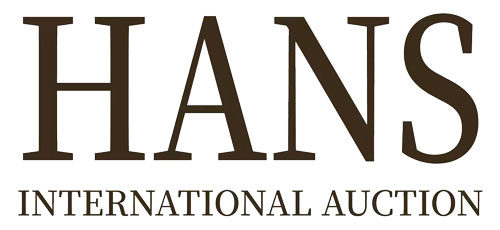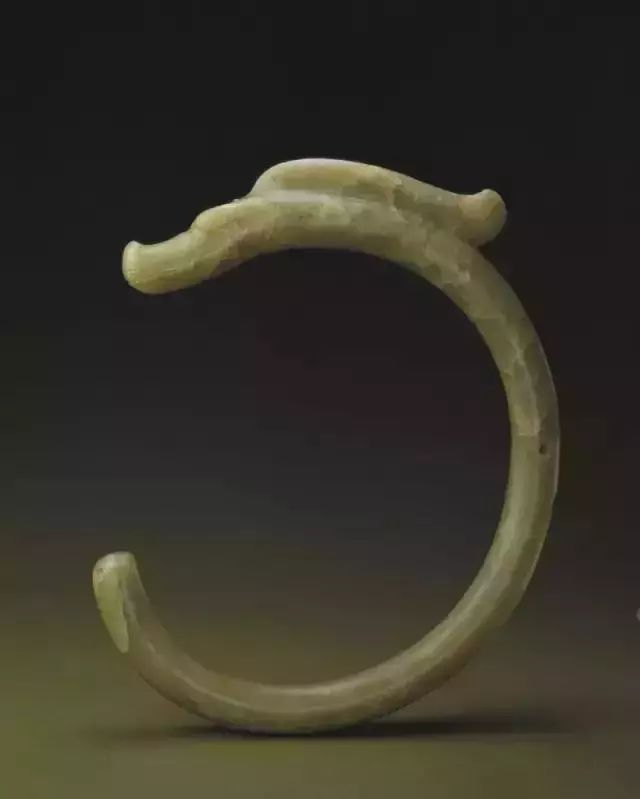Japanese home design is not only famous for its rich history and tradition, but more…
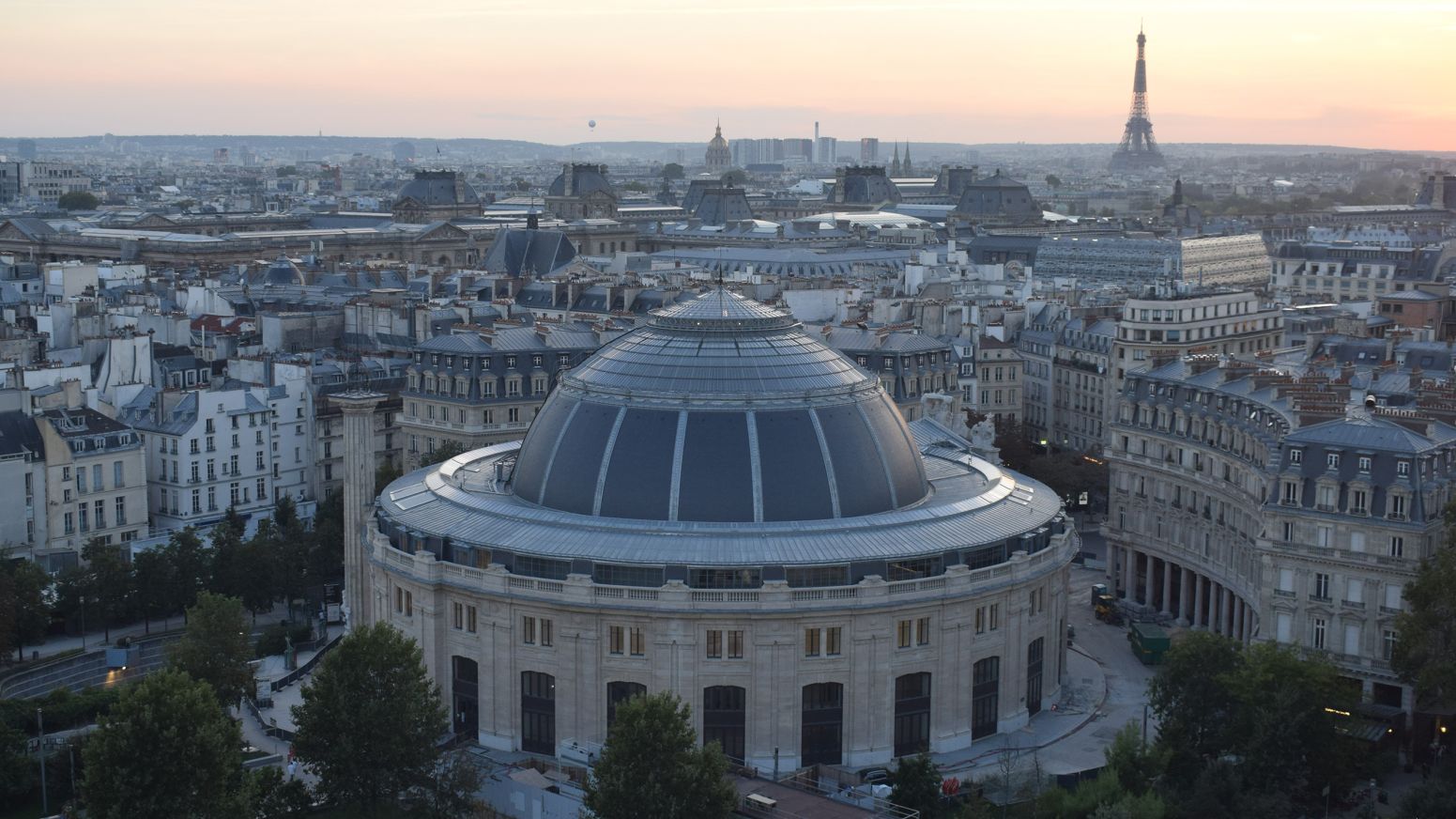
Paris Stock Exchange – Opening of Pinault’s Private Museum: the most eye-catching art event of the year
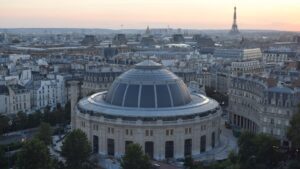
The Stock Exchange in the center of Paris. Courtesy of the Private Pinault Museum of the Paris Stock Exchange. Image delay for shooting G
Bourse de Paris – Opening of the Pinault private museum: the most notable art event of the year
The Paris Stock Exchange, built in the 18th century, was grandly opened on May 22 after five years of rectification and construction, becoming a new landmark in Paris to display Pinault’s private collection. Jonathan Bastable introduces the highly anticipated museum
If you look down on the stock exchange from above, you will see that the buildings and surrounding layout form a series of concentric circles. In the center is the dome of the building, like an upside-down Song Dynasty tea bowl, exquisite and translucent, elegant and refined.
The second concentric circle is the classic nineteenth-century biscuit-jar façade. Outside the building, the roundabout Vialm Street, the curved facades of the apartments to the west and the half-moon-shaped park to the east form the outer circle.
The circles and arcs echo closely, and at first glance it looks like ripples on the lake, but the planning of this corner of Paris is very dense and complex.
The building resembles a Jasper Johns masonry painting and rivals a Tibetan mandala in complexity. The building’s layout became more complex as the stock exchange was transformed into François Pinault’s contemporary art collection.
The stock exchange was originally built in the 1760s as a corn market. It looks like a small Roman arena, an open-air place for bartering and trading grain.
Less than 10 years after its completion, the market added the largest dome in France at the time. The roof collapsed in a fire in 1802 and was not replaced until 10 years later by a new cast iron dome covered in copper. This roof has the same shape as the exchange’s current dome.
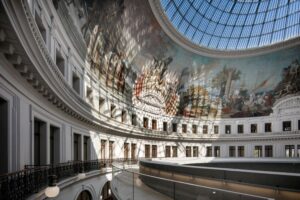
A nineteenth-century fresco on the dome of the Stock Exchange depicts French trade on the five continents. Photo: Patrick Tourneboeuf, Bourse de Paris – Private Museum Pinault © Tadao Ando Architect & Associates, Niney et Marca Architectes, Agence Pierre-Antoine Gatier
In the 1880s, the building was rebuilt again, and all the outer walls were removed, leaving only the skeleton of the inner colonnade and the dome. The top of the dome now features a circular skylight to bring in natural light.
As for the exterior, it is replaced by a modern design. Today, the façade of the Bourse is in the same style, embellished with neoclassical pilasters, reflecting the gravitas and self-confidence of the French Third Republic.
The building is still a place of commerce, but the goods bought and sold have changed from sacks of wheat to piles of numbers. In order to highlight the lofty image and financial-related functions, five large-scale murals were added to the dome for people on the trading floor to appreciate carefully.
The scenes depicted in the murals symbolically record the history of France’s trade across the five continents, witnessing the influence of this dynamic commercial nation in the world. The building is now officially known as the Stock Exchange.
This is the stock exchange after 20 years of closure, taken over by Pinault’s private gallery five years ago.
The neighborhood where the Bourse stands was once the center of the food trade, the “belly of Paris,” as Emile Zola described it. But these streets later became the cultural heart of Paris. Not far from Nelson Mandela Park is the Pompidou Center standing on the old market in the Royal Quarter of Paris.
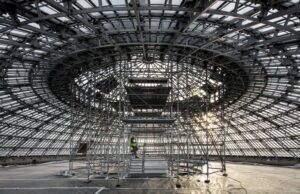
Courtesy of the Bourse de Paris – Private Museum of Pinault © Tadao Ando Architect & Associates, Niney et Marca Architectes, Agence Pierre-Antoine Gatier Vidéo Victor & Simon
Stock Exchange director Martin Bethenod said the location of the new gallery made its role and significance even more important. “It will be the only museum in Paris with a single-collector collection of contemporary art,” he said.
“The opening of the museum, located between the Center Pompidou and the Louvre, will be a unique event because it will hyphenate Paris’ ancient heritage and modern avant-garde.”
What Martin Berthenord calls avant-garde thinking is architect Tadao Ando’s radical reinvention of architectural interior design.
Known for his use of geometric shapes and natural light, Tadao Ando has a keen awareness of his surroundings, so he chose to install a large concrete column in the pavilion, reaching almost to the roof.
New interior walls rise up like Jurassic-era cliffs to form another circle within the building, which is even more impressive for visitors entering the museum.
“The circle is infinite” – Tadao Ando on the inspiration for reshaping the stock exchange
“50 years ago, I visited the Pantheon in Rome and it was empty. When I looked up, the temple symbolized eternal nothingness. A
The 8-meter wide skylight traces the path of the sun, expressing the ultimate opposition of light and dark. Long before life appeared on Earth, the Sun created everything for Earth. I have always believed throughout my career that the best buildings are not the best buildings
. form, but the architectural form should disappear, leaving only the interior space.
You can see my exploration of this concept at Chichu Art Museum in Naoshima, which sinks deep into the mountains, leaving only a series of connected geometric spaces.
I used a similar concept for the stock exchange and saw no need to change the look as I was more interested in the arrangement of the spaces.
Circles are infinite. Humans have studied the round shape for millennia, admiring its simplicity but unable to replicate its perfection.
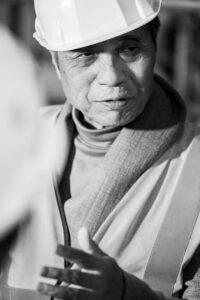
Tadao Ando was photographed at the stock exchange in October 2018. Courtesy of the Bourse de Paris-Museum Private Pinault. Maxime Tétard
In this day and age, humans use geometry to connect metaphysical things, and I often use squares, circles and triangles in architectural design. When these Euclidean geometric figures are integrated into the space, it will trigger a symbolic and physical experience.
In Japan, there is a word ‘Okuyukashii (okuyukashii)’, which means ‘modest and graceful’. If the word is taken apart, ‘奥行き(okuyuki)’ describes the depth of art, space and information. This root implies overlapping and hiding different elements, which can enhance the experience of beauty.
This is the most natural way of thinking for the Japanese, and Buddhist temples in Kyoto and Nara often follow this principle to create dramatic spatial effects.
I hope that by renovating the Stock Exchange, the life of the building will be extended for centuries to be admired by future generations.
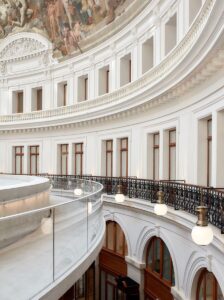
Old and new elements coexist within the building. Bourse de Paris – Private Pinault Museum © Tadao Ando Architect & Associates, Niney et Marca Architectes, Agence Pierre-Antoine Gatier. Photo: Maxime Tétard, Studio Les Graphiquants, Paris
Tadao Ando’s surprise makeover at the stock exchange is in some ways as bold and dramatic as IM Pei’s glass pyramid for the Louvre more than 30 years ago.
The scale of the building is huge, and the materials used are more rough and primitive. Even so, Tadao Ando’s concept is much more subtle than Pei’s glass spire, not only because his cylinder is completely hidden in the original building, but more importantly, the cylinder is not connected to the structure of the building at all (except for the floor. ).
It was as if the old and new worlds kept a small, respectful distance from each other. Martin Bethenod must have had this in mind when he described Tadao Ando’s work as a hyphen, a symbol that simultaneously separates and connects two parts of a sentence, changing the overall meaning.
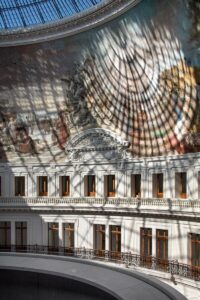
The light in the dome changes with time and season. Photo: Patrick Tourneboeuf, Bourse de Paris – Private Museum of Pinault © Tadao Ando Architect & Associates, Niney et Marca Architectes, Agence Pierre-Antoine Gatier
Tadao Ando thinks that the part he built in the exchange is a decoration, or a tool for concealment? “I don’t see concrete cylinders as walls, but as a way to use space,” he said.
“Two contrasting structures with distinct stylistic identities that engage in a dialogue around the passage of time from the past to the present and the future.”
Tadao Ando hopes that when visitors appreciate the art collection in the museum, they can experience this awareness of time. “Walking along a curved wall, the space in front of you slowly unfolds, but a straight wall reveals everything at once.
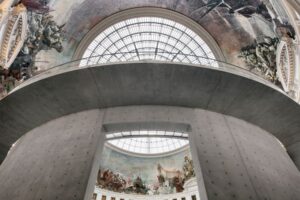
“I don’t see concrete cylinders as walls, but as a way to use space,” says Tadao Ando. Paris Stock Exchange – Musée de Pinault © Tadao Ando Architect & Associates, Niney et Marca Architectes, Agence Pierre- Antoine Gatier. Photo: Patrick Tourneboeuf
Thus, the circular corridor created by the concrete cylinders guides (actually compels) the visitors around the pavilion like asteroids in the solar system, like the track of the minute hand of a clock.
This layout makes the experience of encountering artworks different in the museum, because in the past, visitors only need to pass through the gate and enter the traditional rectangular white exhibition hall.
There are no thresholds in this gallery (or at least part of it), and visitors don’t need to adjust their mood to appreciate the artwork.
The curved wall means that the artwork will slowly appear like a ship on the distant horizon. Tadao Ando pointed out: “This kind of uncertainty and mystery of the unknown becomes a metaphor for the rhythm of life.”
“The circle is connected to light through the shapes of the sun and moon, celestial bodies that control our perception of time and space.”
I think visitors will appreciate it very quickly and discover the wonder of it” – Jean-Jacques Aillagon, Director of the Pinault Private Museum
Circularity and light: Tadao Ando draws a poetic connection between the two, but inside the Exchange this connection takes immediate and concrete form in the glass at the top of the dome. It was the work of nineteenth-century engineers under the direction of architect Henri Blondel, with a very practical purpose.
But now the exchange has become an art museum, and the skylights seem to be designed for art, becoming a surprise gift from Blondell to Tadao Ando.
The elliptical beams of sunlight penetrating the skylights move along the top of the interior walls, their precise shape, color and brightness changing with time and season. The sunlight is thus a work of art in itself, like a changing circular painting in the style of James Turrell.
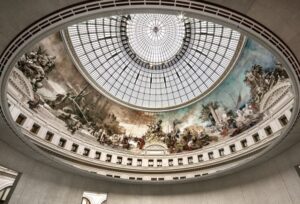
Nineteenth-century skylights illuminate the frescoes and the space below. Bourse de Paris – Private Pinault Museum © Tadao Ando Architect & Associates, Niney et Marca Architectes, Agence Pierre-Antoine Gatier. Photo: Patrick Tourneboeuf
At the same time, sunlight penetrating the dome also illuminates the frescoes that adorn the interior of the dome.
The murals are 10 meters high and 140 meters long at the base, and were created by five artists. After they painted the works on the canvas, they pasted the canvas on the curved surface like wallpaper. This technique is called “pasting method”.
Over the 125 years, some of the frescoes have peeled off or become fragile and are covered in dust, and here and there there are signs of damage to the magnetic iron racks beneath the canvases due to the accumulation of dust.
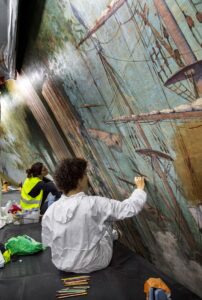
Bourse de Paris – Pinault Private Museum. Photo: Patrick Tourneboeuf
A total of 24 restorers helped restore these murals depicting global trade (it would be nice if each restorer represented a time zone). Standing on the top edge of Tadao Ando’s cylinder, visitors can better see the works created by these restorers and original artists.
Visitors are able to admire animals that represent different places almost up close, such as polar bears for the north, and elephants for the east.
Visitors have seen Cindy Sherman (Sherman), Jeff Koons (Koons), Richard Serra (Serra), Cy Twombly (Twombly), Mark Rothko (Rothko) on display in the museum ) and the works of several artists, these murals will be the most suitable and spectacular end to the visit.
When the museum officially opens, what will it become? A complex? A complete collection of works created by joint efforts? Or a place to collect the best works of contemporary art?
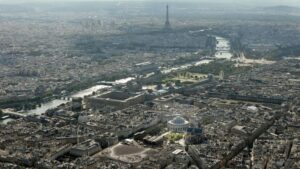 The Bourse is a familiar Parisian landmark, adjacent to the Louvre. Bourse de Paris – Pinault Private Museum. Photo: Philippe Guignard – Air Images
The Bourse is a familiar Parisian landmark, adjacent to the Louvre. Bourse de Paris – Pinault Private Museum. Photo: Philippe Guignard – Air Images
Jean-Jacques Aillagon, former French Minister of Culture and director of Pinault’s private art museum, said: “It has multiple identities at the same time.”
“Sometimes we move too fast to notice the opposition between tradition and new ideas, but both express the same human spirit, which also spans the long history of cultures and civilizations.”
He continued: “The process of exploring the museum will bring visitors many novel experiences. The building itself is already very unique, with rich decorations, and visitors can also appreciate the collections at close range and gain an extraordinary artistic experience. Tadao Ando’s The work also brings a unique architectural experience.”
“I think visitors will appreciate it very quickly, be surprised and find it amazing.”

